- Home
- Our Story
- Safaris & Excursions
- Guides
- Gallery
- News
- Contact Us
This Uganda Birding safari was tailor-made with a particular target species. The birdwatching tour covered most of Uganda’s prime birding destinations with much focus on the Albertine Rift region in western Uganda, home to some of the country’s storied birding hotspots.
The Albertine Rift in Western Uganda includes top birding National Parks, full of forest birds you would only find in the far west of the African continent, such as Maxwell’s Black Weaver, the Handsome Spurfowl, and many more ultra-rare endemics in Uganda.
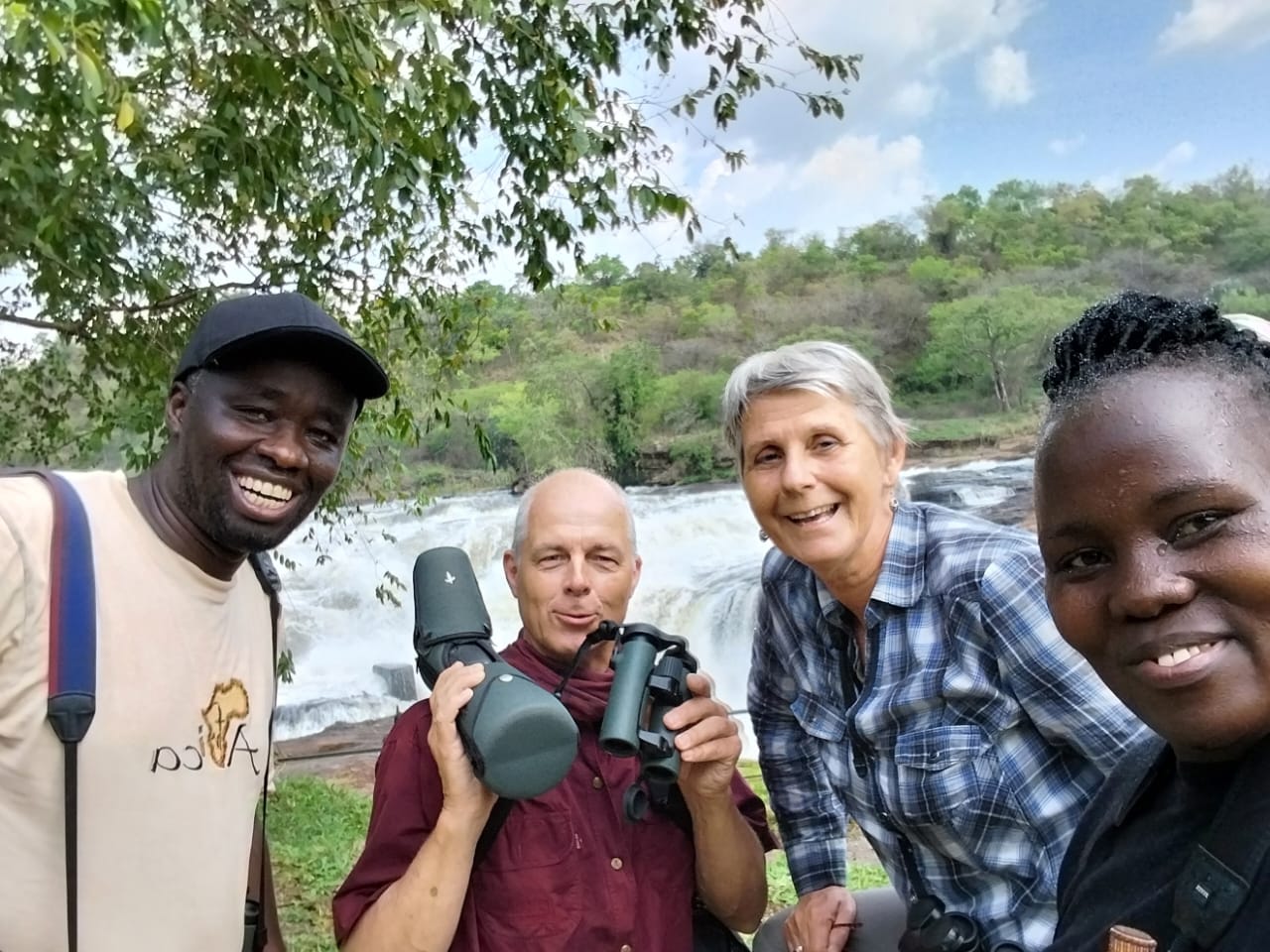
The Albertine Rift in Uganda also has its own (23) endemic bird species, of which we saw 20. As a summary of the Uganda birding trip report in three weeks, we followed a birding circuit encompassing forests, mountains, swamps, savannah, and lakes. We managed to see 519 species, which was remarkable given that most of the common bird species were not given much attention. A new record during our 30+ years of birding. This was truly a wonderful and unforgettable birding and wildlife adventure!
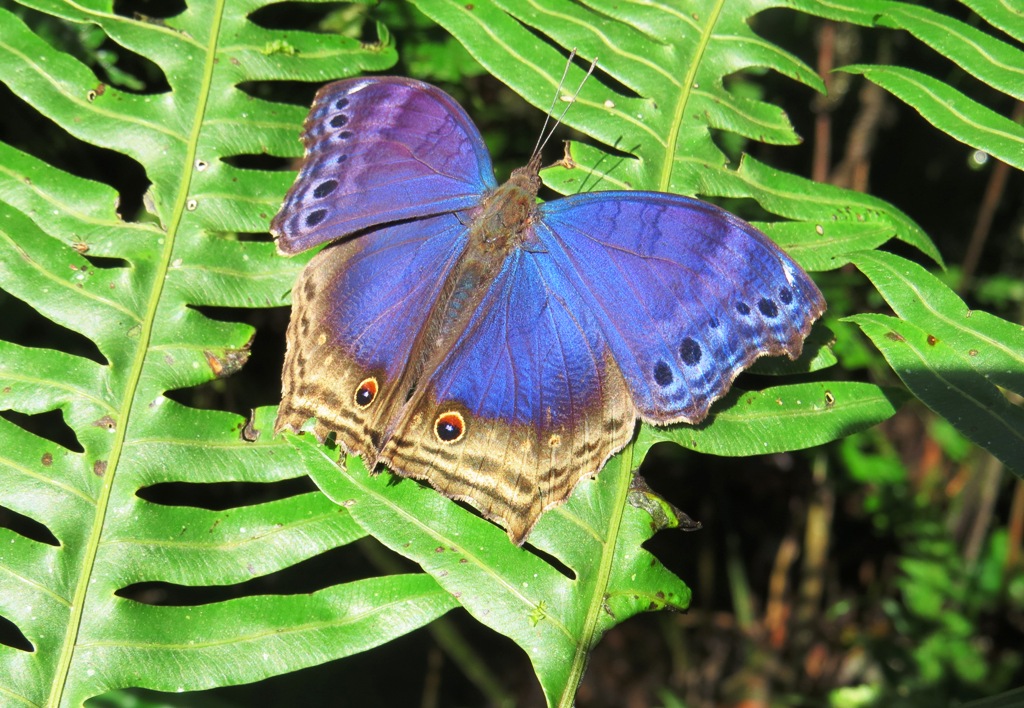
We are Mwangi wa Gitau (ConQuest Adventures Ltd), Proscovia (Prossy) Nanyombi (probably the best female birder in Uganda), and three clients: Ian de la Rosa, Leonie Venroij, and Rick Jacobsen. We, Leonie and Rick, knew Mwangi from previous birding trips in 2015 – 2017 in Kenya, and we consider him tremendously knowledgeable about all the birds in the region. Mwangi invited Prossy to join us, thus adding even more specific knowledge and experience to the trip.
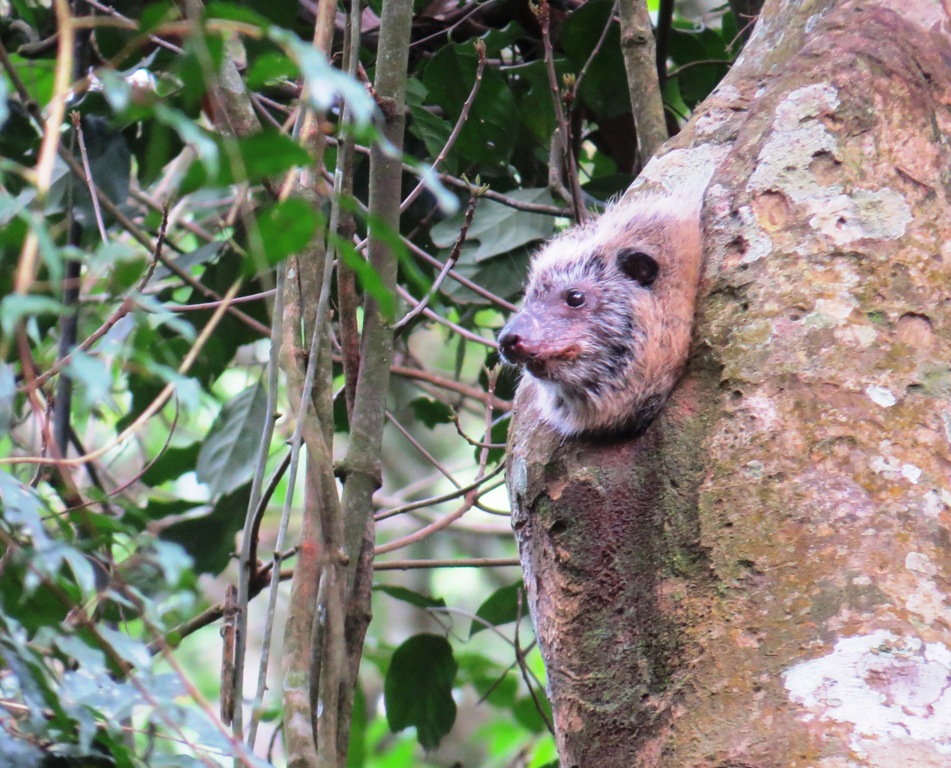
We had chosen to minimize savanna birding in favor of the harder-to-get forest species. All of us had seen significant numbers of savanna bird species anyway. Those three weeks of Uganda birding were hard work; we would only see several species for a few seconds, such as the GRANT’S BLUEBILL. Others, which we expected to be near impossible (unless you do birding in Gabon or Cameroon, for example), were rather easy to find and in good numbers, such as the FOREST FLYCATCHER. Uganda, as a country, is beautiful with a splendidly distinctive range of habitats, making it one of the best destinations for birding in East Africa. The country is often described as the “Pearl of Africa.” No other place in Africa can match the incredible birds and luxuriant montane forests, with a high degree of endemism.
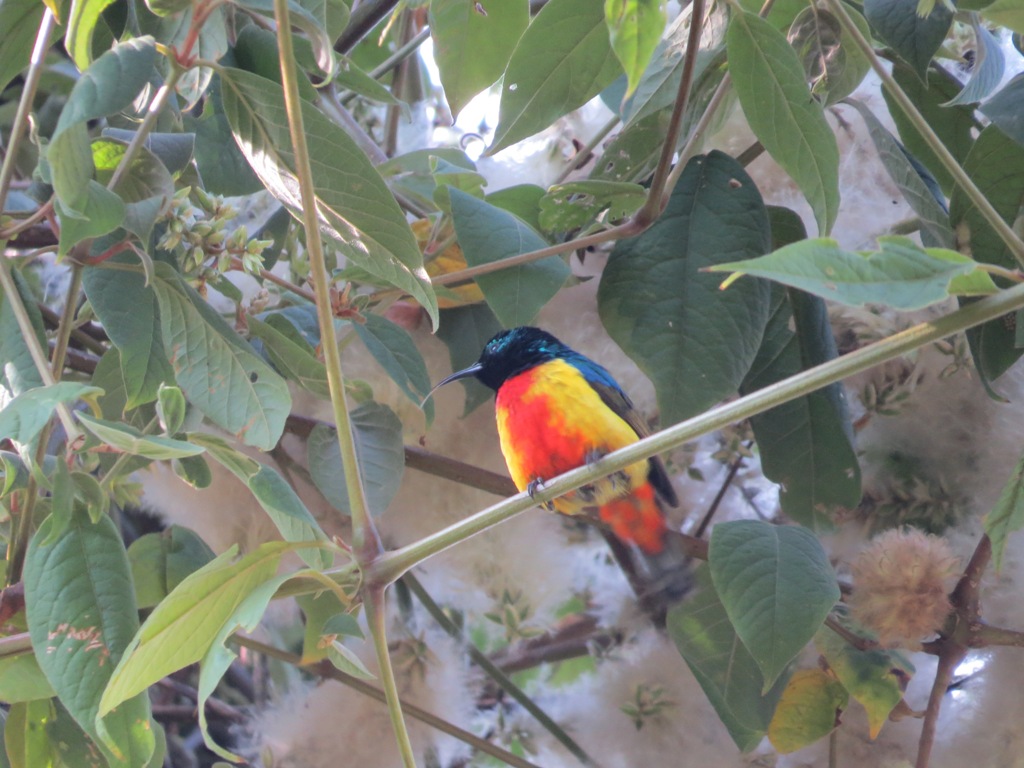
We chose to visit the Albertine Rift in Uganda in March. We were well aware of the risk of an early rainy season …and that rain did come early. But only once did the rain stop us from birding, and only for an hour or so. We noticed that the eBird stats for the Uganda Albertine Rift in March didn’t have many submitted bird checklists: many records of observations of bird species seem to suddenly stop by the end of February. That didn’t stop us from seeing 519 species in the top birding hotspots in Uganda! It seemed that there were hardly any birders after February to submit eBird lists. Birds were simply underreported. We hope we contributed to improved stats in eBird for the Uganda Albertine Rift in March with our birding trip.
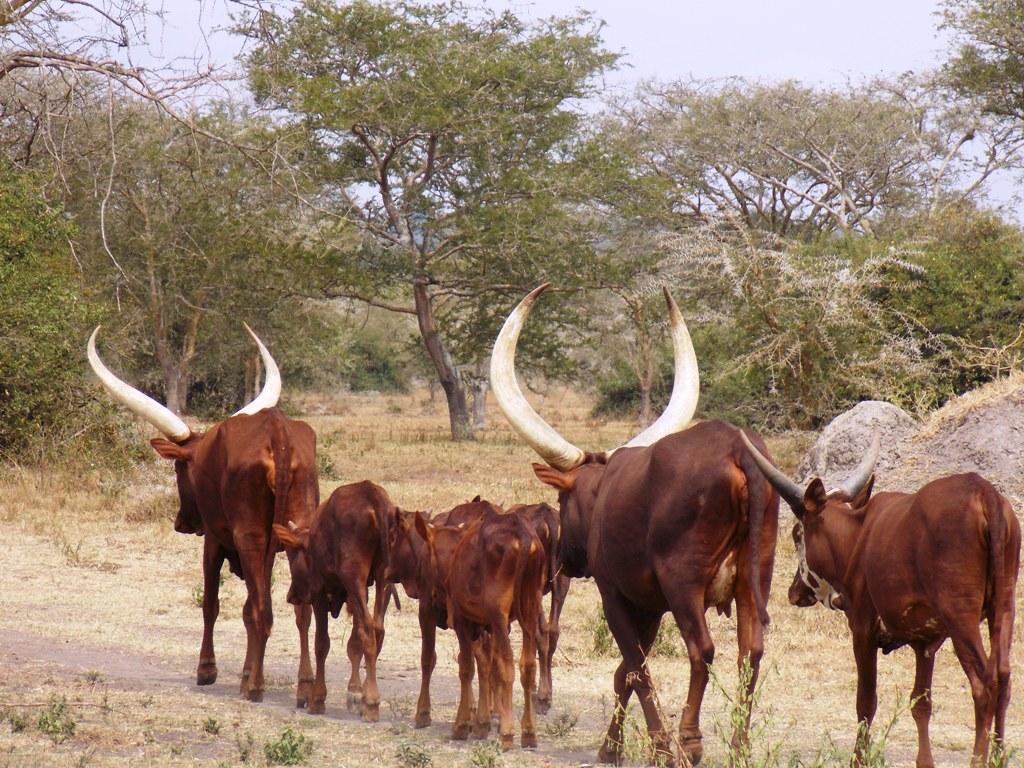
This birding tour covered Uganda’s premier birding hotspots, offering a chance to experience the country’s incredible diversity of habitats and birdlife. Key destinations include Mabamba Swamp, Lake Mburo National Park, Mgahinga National Park, Bwindi Impenetrable Forest (Ruhija and Buhoma sectors), Queen Elizabeth National Park, Kibale National Park with Bigodi Swamp, Semliki National Park, and Murchison Falls National Park. Each location offers unique habitats and specialty species, from the iconic Shoebill to Albertine Rift endemics and Congo Basin forest birds.
MARCH 3RD: MABAMBA SWAMP
We started the Uganda birding tour with a visit to the glorious Mabamba Swamp to search for the elusive Shoebill. Despite the day being very wet, it had rained the whole night, and for the better part of the morning, our boatman masterfully moved the small canoe along the channel, where we managed to see and photograph three individuals. The Shoebill is one of the most sought-after birds in any birdwatching safari in East Africa. The Shoebill is high on any birder’s list, and our clients wanted to see this charismatic bird. This almost prehistoric bird is a species that many birders dream of seeing and ranks up there with being one of the most coveted birds to see on an East African birding tour. Birding in Mabamba is done by dug-out wooden canoes, which are owned by communities living adjacent to the swamp who act as guides and custodians of the extensive wetland.
Our first momentous target for the tour was achieved, and the magnificent sighting of the Shoebill set the tone for the rest of the birding trip. Other special birds seen in the wetlands include the African Marsh Harrier, Blue-headed Coucal, Great Blue Turaco, African Swamphen, Gray Crowned Crane, African Jacana, Black Sparrowhawk, White-winged Tern, Grey-rumped Swallow, and Eastern Plantain-eater.
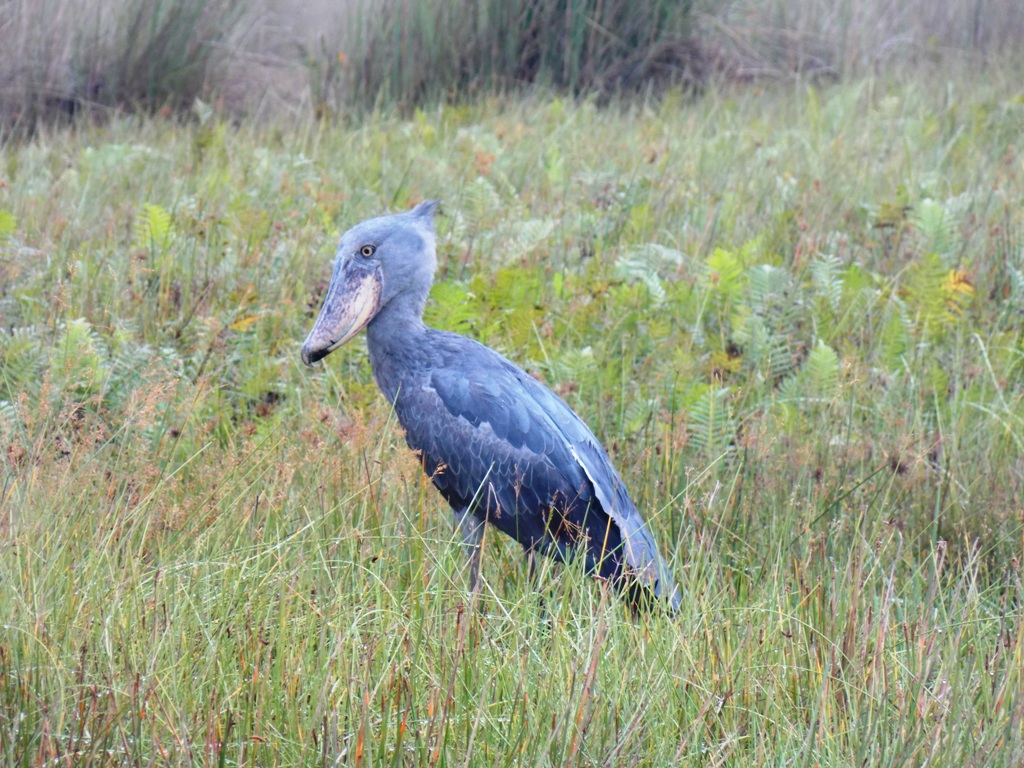
MARCH 4TH: TRANSFER TO LAKE MBURO NATIONAL PARK
We departed for Lake Mburo National Park ( a top birding hotspot in Uganda) in the morning, arriving in time for lunch, afternoon we had a birdwatching session around the lodge, where we managed to see interesting bird species such as the Southern Red Bishop, Trilling Cisticola calling in top of bushes, Senegal Lapwing, Green-winged Pytilia, Black-headed Gonolek, Crested Francolin, Pygmy Kingfisher, Broad-biller Roller, Lesser Masked-Weaver, Fiery-necked & Freckled Nightjars, Angola Swallow, Buff-bellied Warbler, Black-lored Babbler, African Thrush, Black Bishop, and Plain-backed Pipit. We stayed at Rwakobo Lodge on top of a big rock with a beautiful view of the savanna landscape.
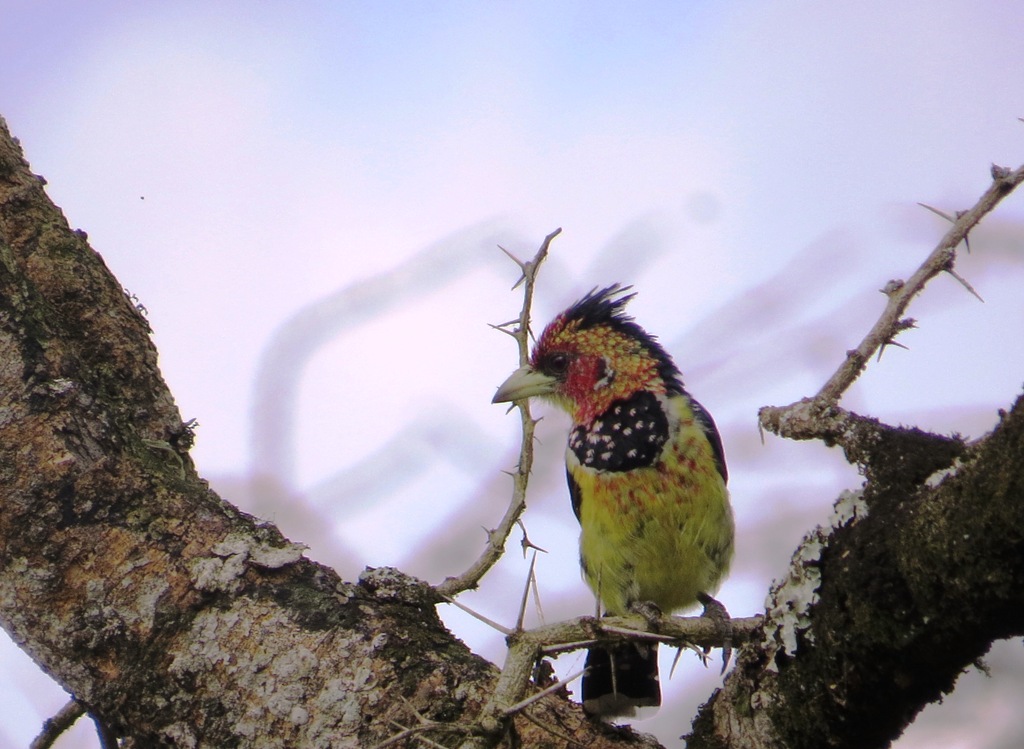
MARCH 5TH: LAKE MBURO NATIONAL PARK
After the early morning sumptuous breakfast, we drove to the park, to search for the area specialties’, we got a pleasant welcome from an obliging African Crake along the driveway plus many exciting bird species such as the Crested Barbet, and White-winged Black Tit, Red-necked Spurfowl, Greater Painted Snipe, Bateleur, Tawny Eagle, Blue-naped Mousebird, Yellow-throated Tinkerbird, Yellow-billed Oxpeckers, Sooty Chat, Yellow-fronted Canary and Golden-breasted Bunting On our way back to the lodge for lunch we managed to see two special barbets, Black-collared and Red-faced at the main entrance, later in the afternoon we drove to Nyaturega River Mouth for a two-hour boat ride; two specialties’ African Finfoot and White-backed Heron plus; Water Thick-knee, Striated Heron, Gray-capped Warbler, Black-necked Weaver, and Yellow-throated Greenbul were spotted.
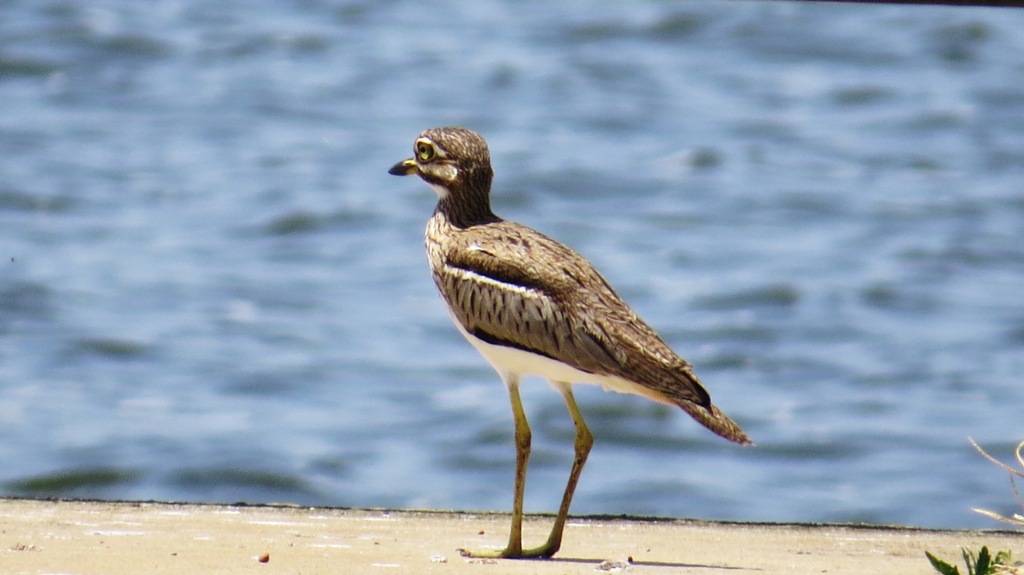
MARCH 6TH: LAKE MBURO- MGAHINGA NATIONAL PARK
We had our breakfast early morning and departed for Mgahinga National Park. The drive from the lodge to the highway had fascinating birds, which, needless to say, had been seen previously, but we had a surprise, a young leopard that caught everyone unawares, with a shout of exhilaration, “A Jaguar” from Rick, before telling him we have no Jaguars in Africa. We proceeded with the birding tour with a stopover at the Equator crossing for a bathroom visit and a bit of shopping. Subsequently, we continued with our Uganda birding tour past beautiful scenery along the way. We had our picnic lunch at Echuya. The forest lies at the heart of the biodiversity-rich Albertine Rift region. We went birding along the road on different stretches where we were greeted by a whole new symphony of forest sounds, we were amply compensated by numerous Albertine Rift endemics such as the Regal Sunbird, Rwenzori Hill Babbler, Strange Weaver, and Red-faced Woodland Warbler, additionally the following birds were also seen: White-necked Raven, Northern Puffback, Yellow-whiskered Greenbul, Green White-eye, and Gray-throated Tit-Flycatcher. Afterwards, we drove downhill to Kisoro to our accommodation at Mucha Lodge, an ideal birding spot too. An hour of birding in the lodge’s vicinity was quite rewarding, with species such as the Black Crake, White-tailed Blue Flycatcher, Green-headed Sunbird, Slender-billed Weaver, Kandt’s Waxbill, and African Openbill.
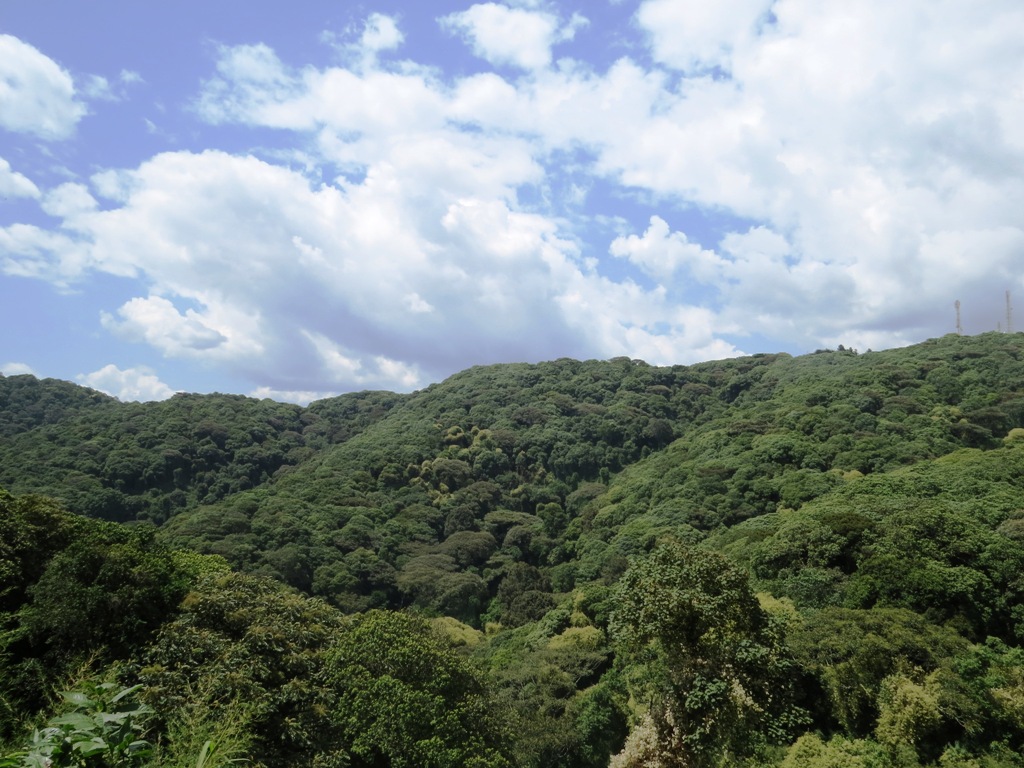
MARCH 7TH: MGAHINGA NATIONAL PARK
Spent the better part of the day birding in Mgahinga National Park, birdwatching, which involved walking uphill on a nature trail accompanied by security guards due to the dangerous wild animals along the trail. We got wonderful birding the mountain forest has to offer, famous for foothill birdwatching, and some unique Albertine Rift endemic species.
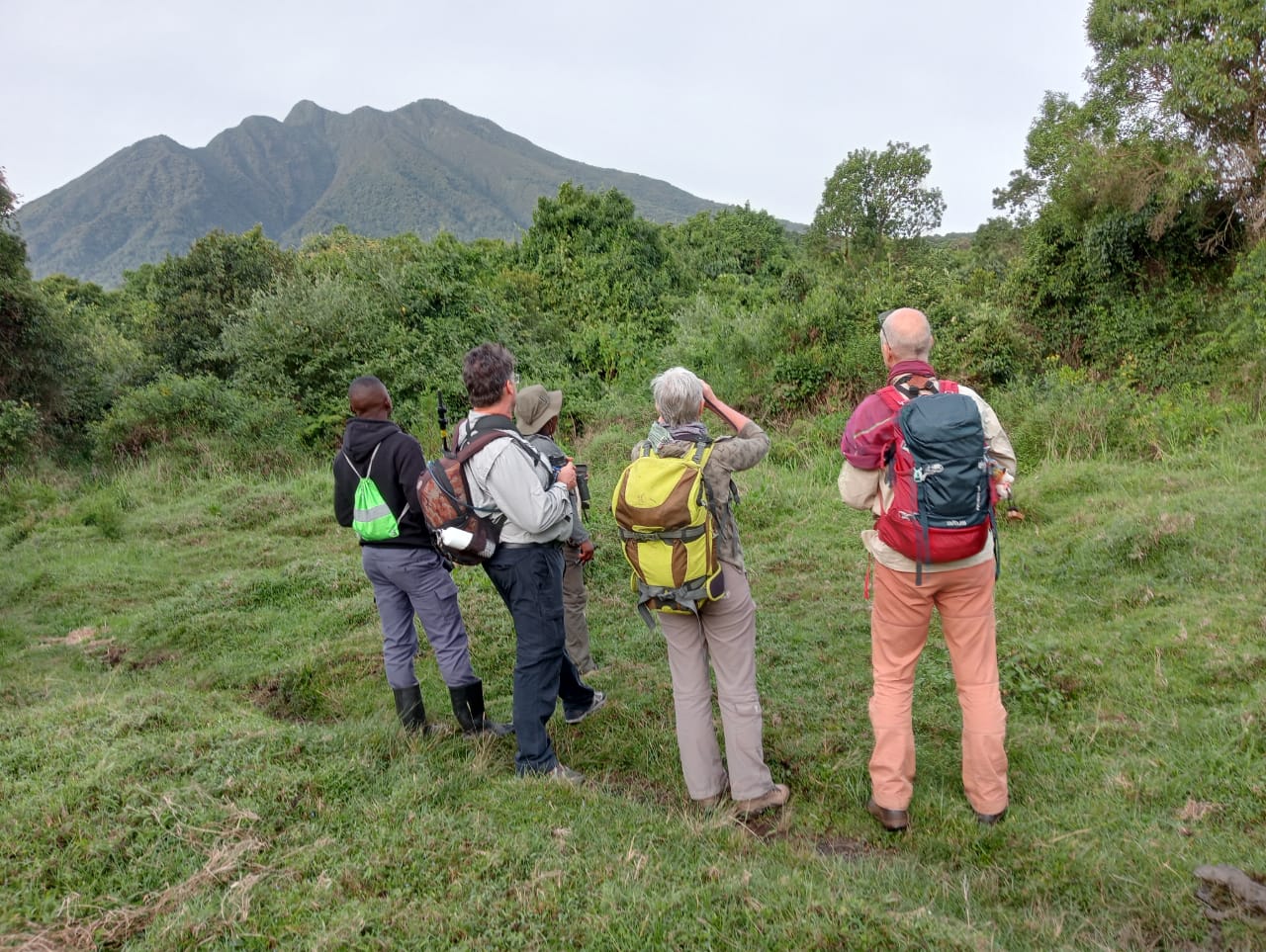
Rwenzori Batis, Rwenzori Turaco, Stuhlmann’s Sunbird, and Western Tinkerbird were seen; the checklist also had the Dwarf Honeyguide, Black-faced Apalis, Albertine Boubou, White-bellied Crested Flycatcher, Archer’s Robin-Chat, Blue-headed Sunbird, and Kandt’s Waxbill. On our way down, we had a nasty encounter with a lone Cape Buffalo, which sent everyone scampering for safety; luckily, no one was injured in the affray.
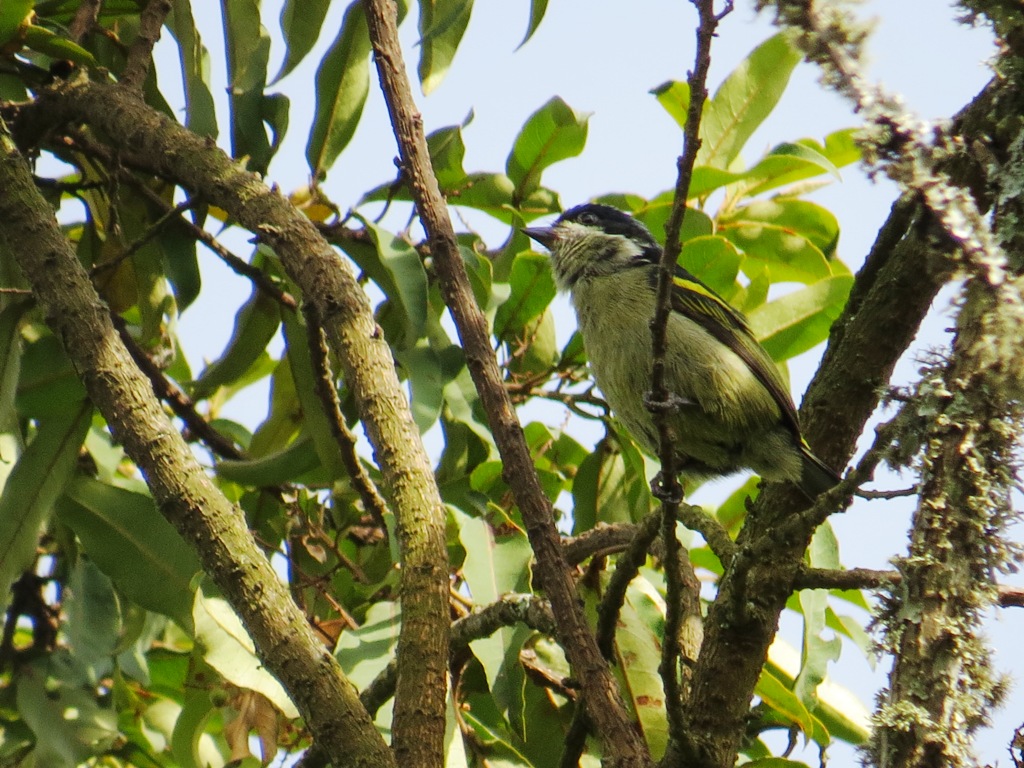
MARCH 8TH: MGAHINGA – BWINDI IMPENETRABLE FOREST (RUHIJA)
Birding activities began early after breakfast, and we had a stopover at Kagano Wetland, a small swamp along Kisoro- Kabale Road. Forty-nine minutes walk yielded around 40 bird species, among them: Western Citril, Red-chested Sunbird, Blue-billed Teal, Red-knobbed Coot, Chubb’s Cisticola, Mosque Swallow, Yellow-bellied Waxbill, Gray-headed Nigrita, Little Weaver, White-tailed Crested Flycatcher, and Slender-billed Weaver. In the afternoon, we explored birding trails in Ruhija. The bird checklist had species such as the Common Buzzard, Rock Martin, Dwarf Honeyguide, Black-tailed Oriole, White-browed Crombec, Black-throated Apalis, Thick-billed Seed-eater, Dusky Long-tailed Cuckoo, Grey Cuckooshrike, and Levaillant’s Cuckoo.
MARCH 9TH: BWINDI IMPENETRABLE- RUHIJA
We had breakfast early and started birding in Ruhija, following the trail to Mubwindi Swamp. Engrossing bird species encountered along this birdy track included Afep Pigeon, Mackinnon Shrike, Dusky Tit, Stripe-breasted Tit, Black-faced Rufous Warbler, Chestnut-winged Starling, Yellow-eyed Black Flycatcher, Red-headed Malimbe, Handsome Spurfowl, Grauer’s Broadbill- the most sought-after bird in this trail, Lagden’s Bushshrike, Rwenzori Apalis, and Dusky Crimsonwing. The Mubwindi Swamp trail treats nature lovers to vistas of lush valleys and the majestic Virunga Massifs. It serves as a popular route for activities such as birding, gorilla trekking, and nature walks.
Besides the many birds, we can see that this part of the forest is home to both Gorillas and Elephants. There were many fresh footprints and droppings along the path. The forest is quite open with dense lower vegetation, probably influenced by the “grazing” of the forest elephants. We also saw one forest elephant. Ruwenzori Sun Squirrel was well seen.
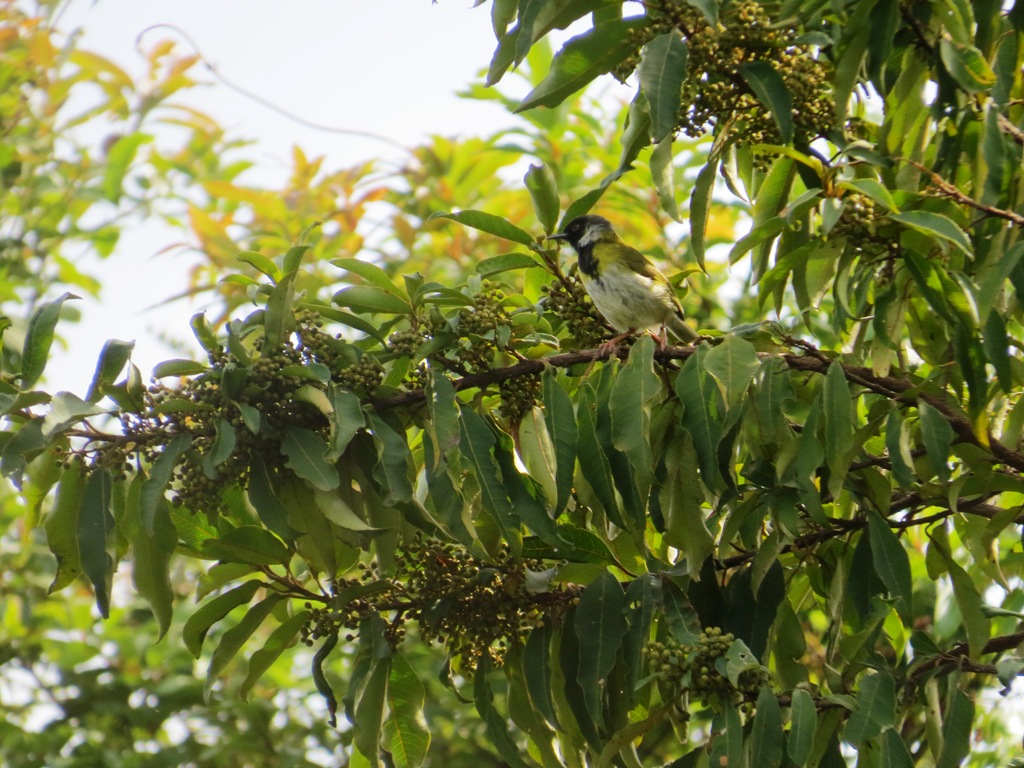
MARCH 10TH: TRANSFER TO BUHOMA
On this day we drove towards the Buhoma sector, places renowned for the best and most productive birding in Bwindi Impenetrable Forest, birdwatching along the way with the “Neck” being one the fruitful, first stops along the River we saw the Cassin’s Flycatcher, Narrow-tailed Starling, Buff-throated Apalis, Red-tailed Greenbul, further ahead we had excellent views of the Black Bee-eater. So many forest birding situations present the same extremes: in the space of half an hour, this one birdless spot had become a busy avian hub as a roaming foraging flock passed through. Delighted, we drove on to our accommodation destination in Buhoma.
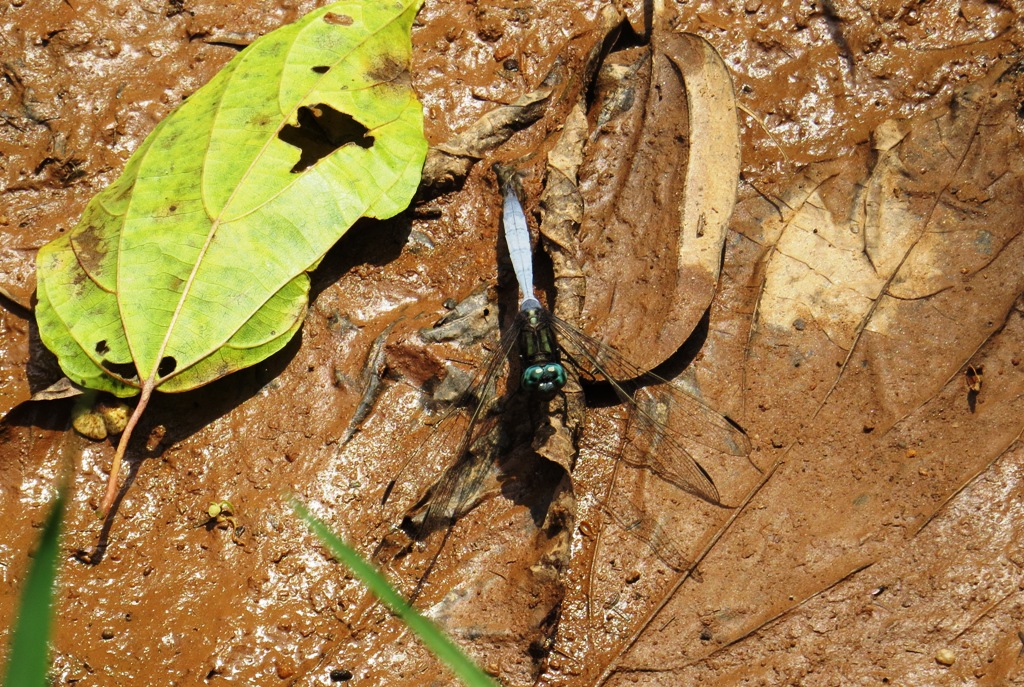
MARCH 11TH: BUHOMA NATURE TRAIL (BWINDI IMPENETRABLE FOREST)
After another splendid breakfast, we headed out along the now-familiar nature trail, accompanied by Nicholas Majani, a very experienced local community guide. There was plenty of early morning activity; the gigantic trees near the entrance attracted a lot of birds. This forest merges birds of the low and highland elevations. A good day yields a great number of specialties from the Guinea-Congo forest and Albertine Rift montane ranges. Notable bird species; Tambourine Dove, African Green Pigeon, Bar-tailed Trogon, Gray-throated Barbet, Yellow-spotted Barbet, Buff-spotted Woodpecker, African Broadbill, Petit’s Cuckooshrike, White-breasted Nigrita, Chestnut Wattle-eye, Black-faced Rufous Warbler, Shelly’s Greenbul, Ansorge’s Greenbul, Purple-headed Starling, Dusky-blue Flycatcher, White-bellied and Gray-winged Robin Chats, Little Green Sunbird, Green-headed Sunbird, Blue-throated Brown Sunbird, Green-backed Twinspot, and Neumann’s Warbler-(This petite bird likes dense and dark entangles, remains low to the ground in bushy vegetation, and is generally an agony to see one)
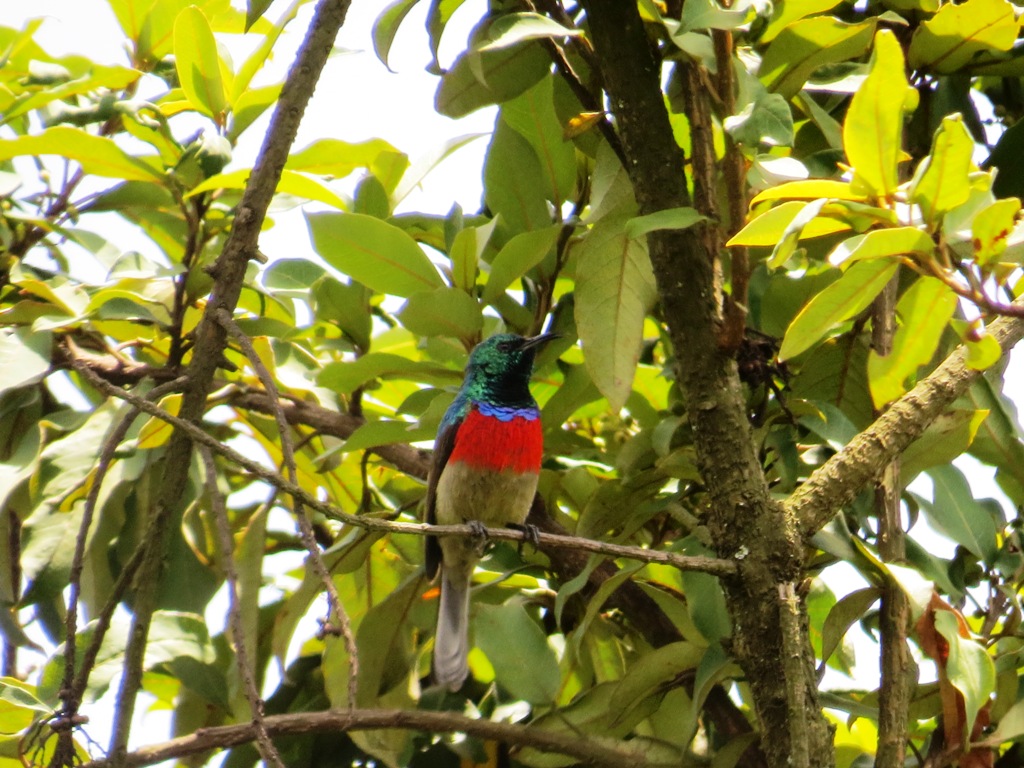
MARCH 12TH: TRANSFER TO QUEEN’S ELIZABETH NATIONAL PARK
We were up and good and early for breakfast, we checked out of the hotel and departed for Queen Elizabeth National Park, with a birding stopover along the way. The first section awarded us with African Woolly-necked Stork, Palm-nut Vulture, Eurasian Kestrel, Black-throated Canary, Magpie Mannikins, Olive-bellied Sunbird, and Long-crested Eagle. We drove farther along the road towards the entrance of the park in Ishasha, which provided a spectacular view across the recently burnt plains and distant mountains in the Democratic Republic of Congo. Birds we busy feeding and singing along the road. In Maramagambo Forest, we managed to see a flock of Western Crested Guineafowl.
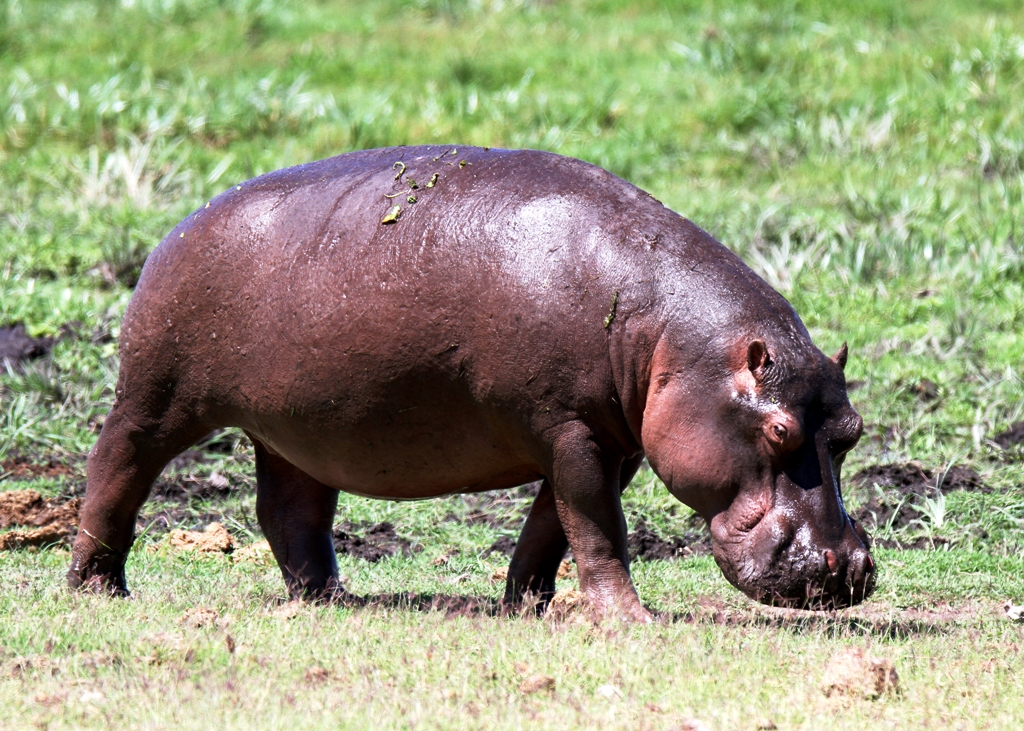
MARCH 13TH: QUEEN’S ELIZABETH NATIONAL PARK
We rose early for breakfast allowing us to make it into the park shortly after dawn, the better part of the morning we spent in the park searching for the savannah species, the plains were productive with sightings of Black-chinned Quail-Finch, Caspian Plover, Temminck’s Courser, African Gray Woodpecker, Rufous-naped Lark, Flappet Lark, White-tailed Larks, and huge herds of Ugandan Kob, Savannah Elephants in groups were also seen, sadly a young calf had a snare on its leg, which was hindering its walking.
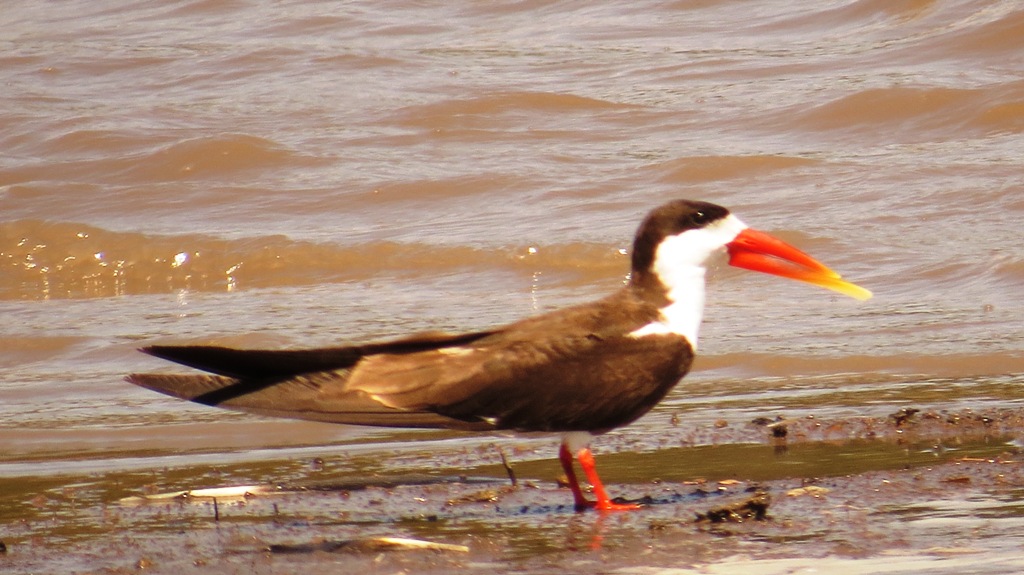
Later in the mid-afternoon, we drove to Kazinga Channel for a boat ride to search for our target species- the African Skimmer. We also saw other bird species of concern, the Pied Kingfishers, which were breeding along the banks in their hundreds, Kittlitz’s Plover, Common Ringed Plover, Gull-billed Tern, Great White Pelican, Goliath Heron, and Eurasian Marsh Harrier. Mammals were plentiful on the cruise with the herds of African Elephants, huge numbers of African Buffalo and Hippopotamus, and others such as Ugandan Kob, Nile Crocodiles, and Waterbuck all showing well for us.
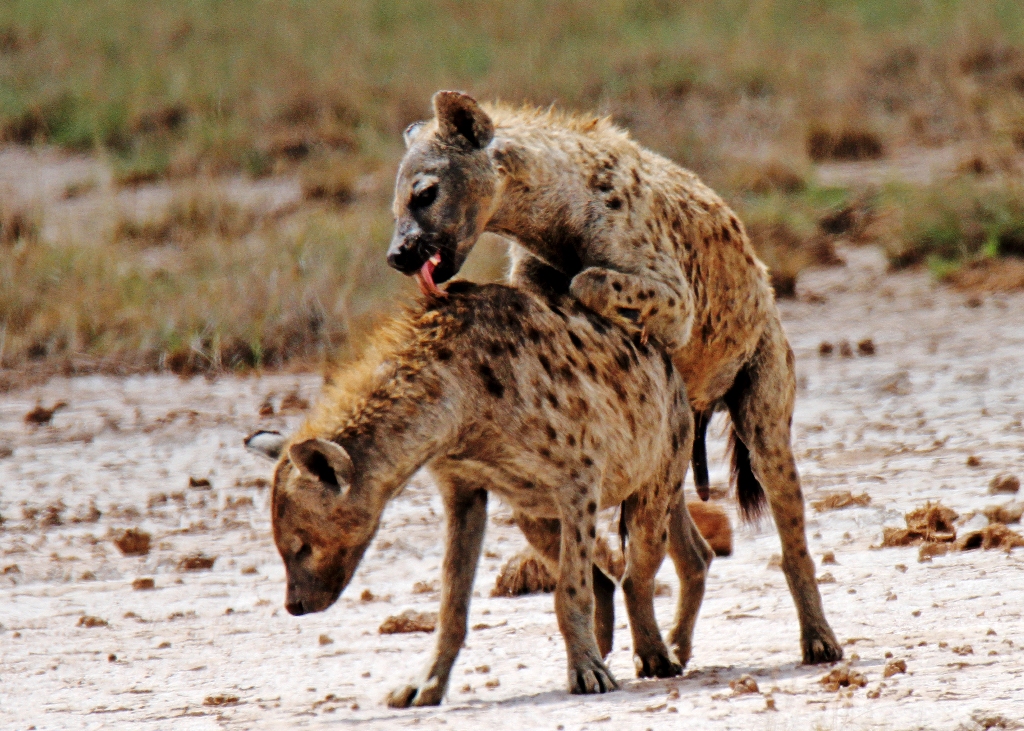
MARCH 14TH: TRANSFER TO KIBALE FOREST
After another delicious breakfast, we left for Kibale Forest. The weather showed no signs of improving; the sky was overcast with a little drizzle, but that didn’t stop us from seeing some beautiful birds. We stopped along the main road inside the Kibale forest, obscured by the low, gloomy clouds; Velvet-mantled Drongo, Sooty Flycatcher, Little Greenbul, and Red-capped Robin-Chat were the highlights.
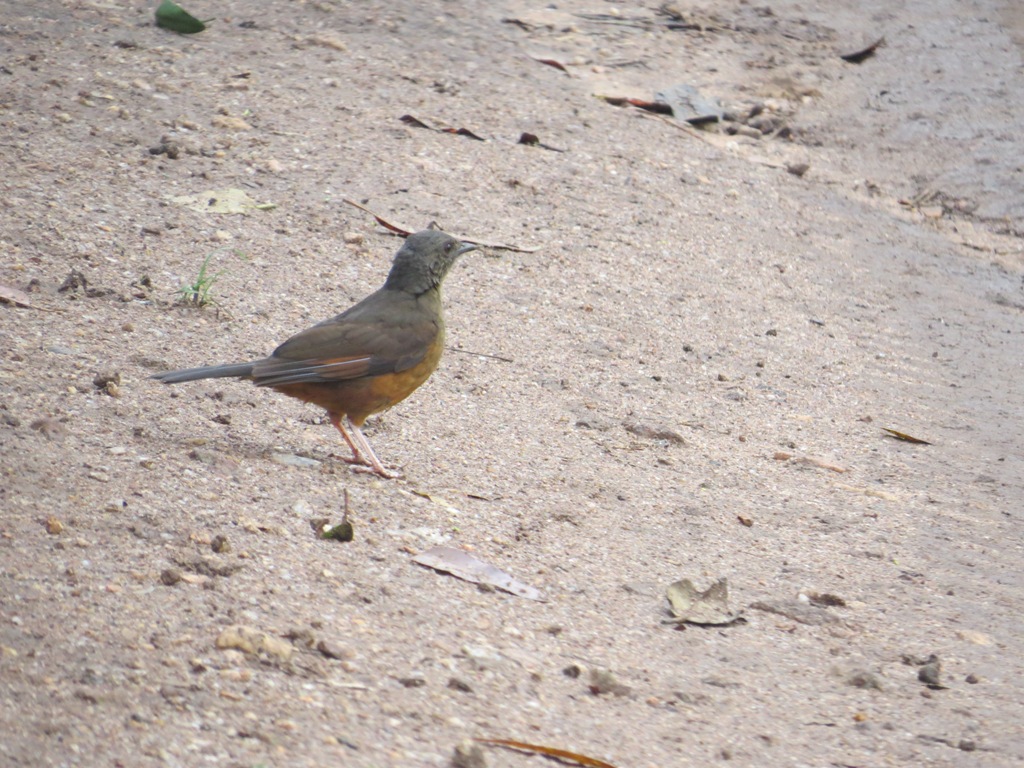
We walked up the road a few hundred meters and were stopped by calls of Green Hylia, Green Crombec, and Olive-bellied Sunbird. Thereafter, we proceeded to our accommodation in Bigodi. After lunch, we went for a walk in Bigodi Swamp. We spent the first little while checking the shy and skulking White-spotted Flufftail, screeching incessantly in the dense thicket at the start of the trail. After a few calls back, it showed up for a second and then disappeared. We had a couple of targets in the Bigodi swamp. The rain was threatening, and it pounded heavily for more than 20 minutes. Despite the downpour, we managed to see and record 15 Great Blue Turacos, Hairy-breasted Barbet, Snowy-crowned Robin-Chat, Shining Blue Kingfisher, and many other bird species.
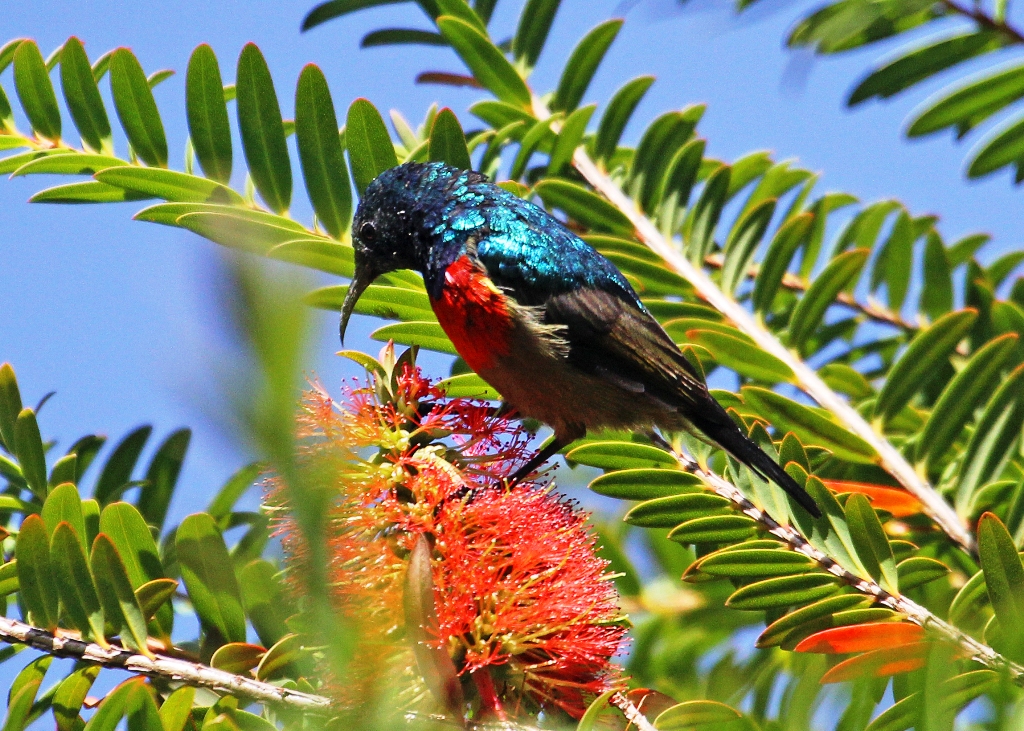
MARCH 15TH: TRANSFER TO SEMLIKI NATIONAL PARK
Up early, breakfast, did a walk within the lodge’s compound to look for missed species from the previous session. We were greeted by sweetly singing Brown Illadopsis, Western Nicator, White-chinned Prinia, and the White-tailed Ant Thrush gave us excellent views on our way out. The Lowland Mask Apalis appeared in a flush and then disappeared in the high canopy. We could hear the call, but it didn’t oblige to show itself.
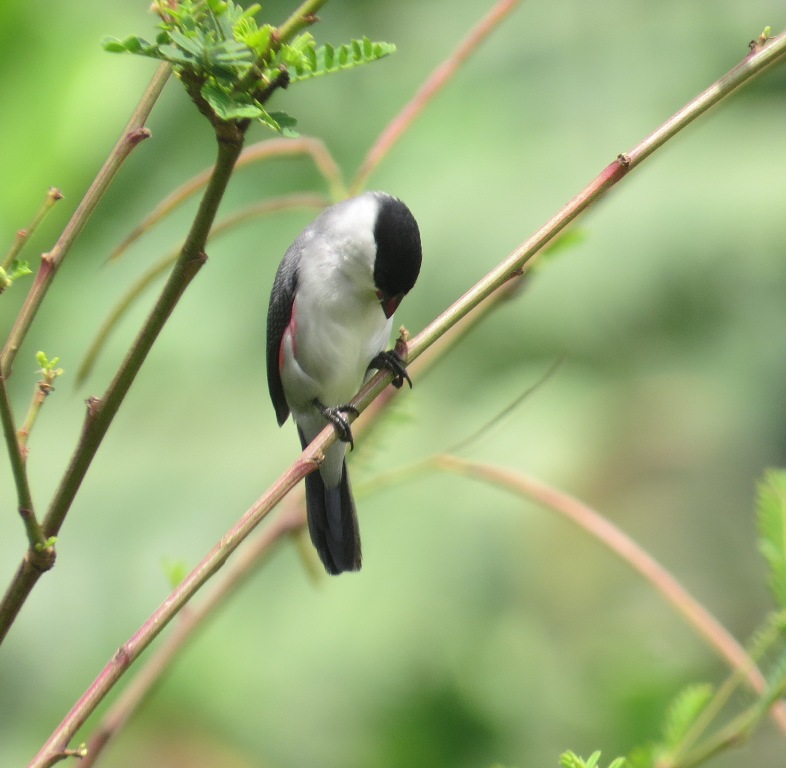
Later drove to Semliki National Park via Fort Portal, where we had a birding stop at a small wetland near the town, which had interesting birds such as Northern Masked Weaver and spectacularly colored Black-crowned Waxbill. A relaxed evening of birding around the Bandas in Semliki National Park produced a few new birds for our trip, such as the Bronzed-naped Pigeon, African Pied Hornbill, Honeyguide Greenbul, and White-breasted Nigrita.
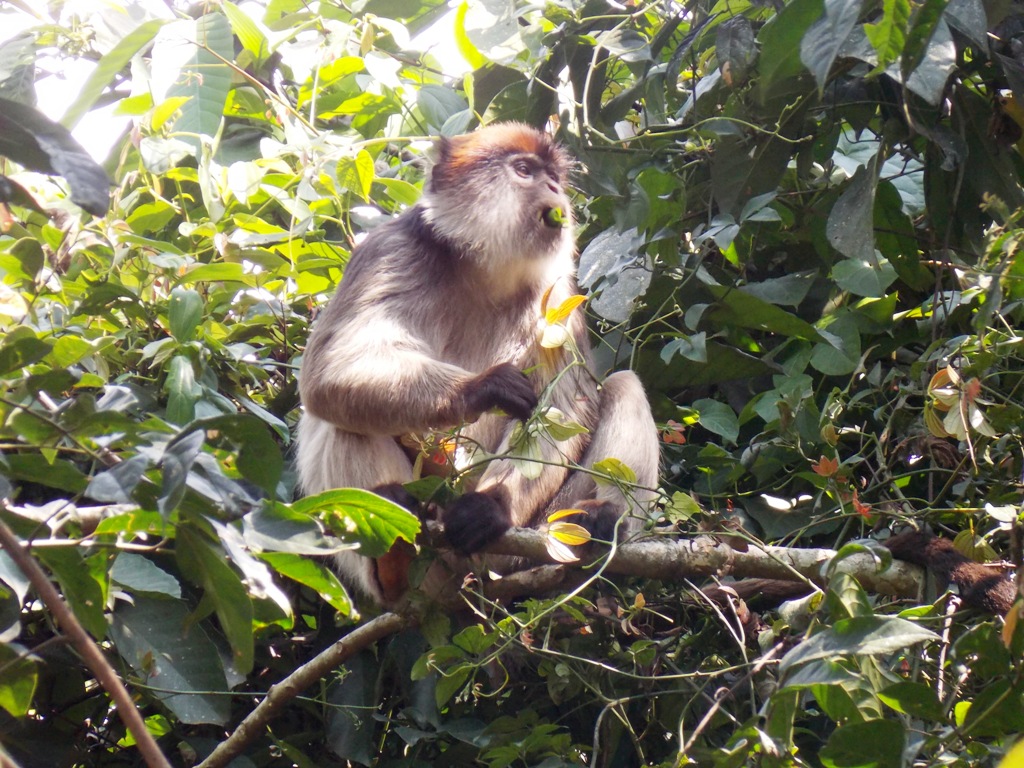
MARCH 16TH: SEMLIKI NATIONAL PARK
On this day, we started our activity early after breakfast, accompanied by Alex, a ranger/naturalist who is knowledgeable about the fauna and flora of Semliki. The forest is the only connection to the Ituri forest from the Democratic Republic of Congo, with over thirty-five restricted-range specialties to be found in East Africa.
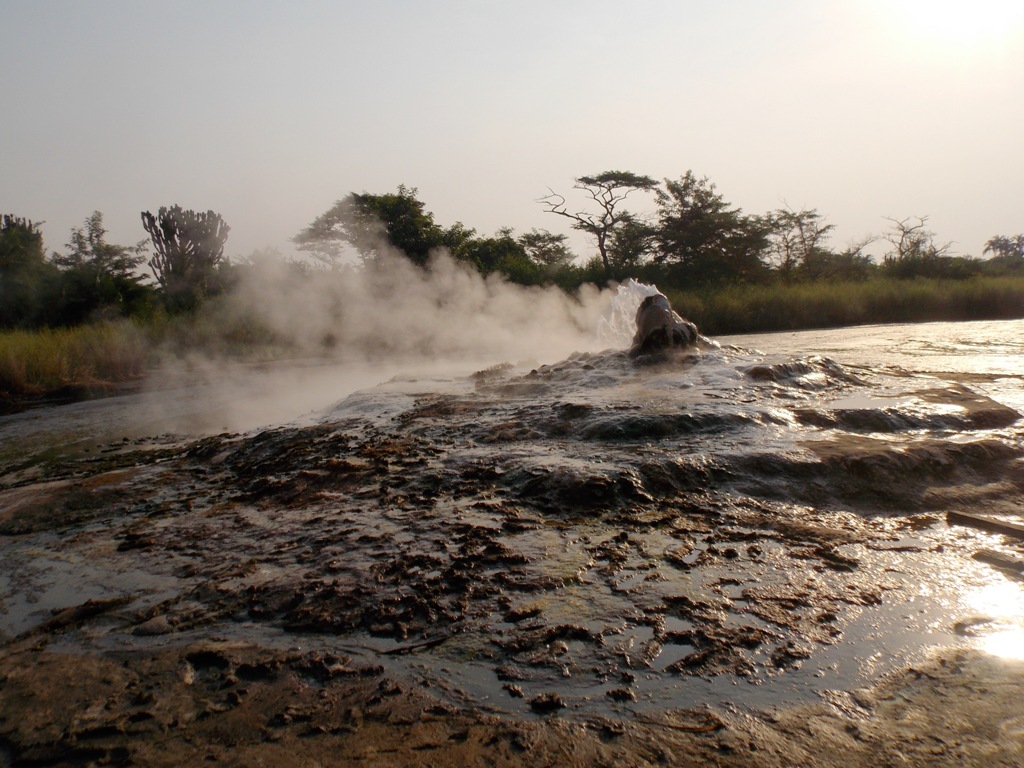
The Red Monkey and Hot Springs Trails were quite rewarding and exceptional. The trail is flanked by tall mature indigenous trees, and we were quick to see birds associated with more undisturbed areas. Some of the special birds we had great views of were the Piping Hornbill, African Green Pigeon, Rameron Pigeon, Red-tailed Bristlebill, Toro-olive Greenbul, Xavier’s Greenbul, Fire-crested Alethe, and Orange-breasted Forest Robin, which was well heard. It was an outstanding experience for these avian oddities. The forest trail is a fantastic birding spot.
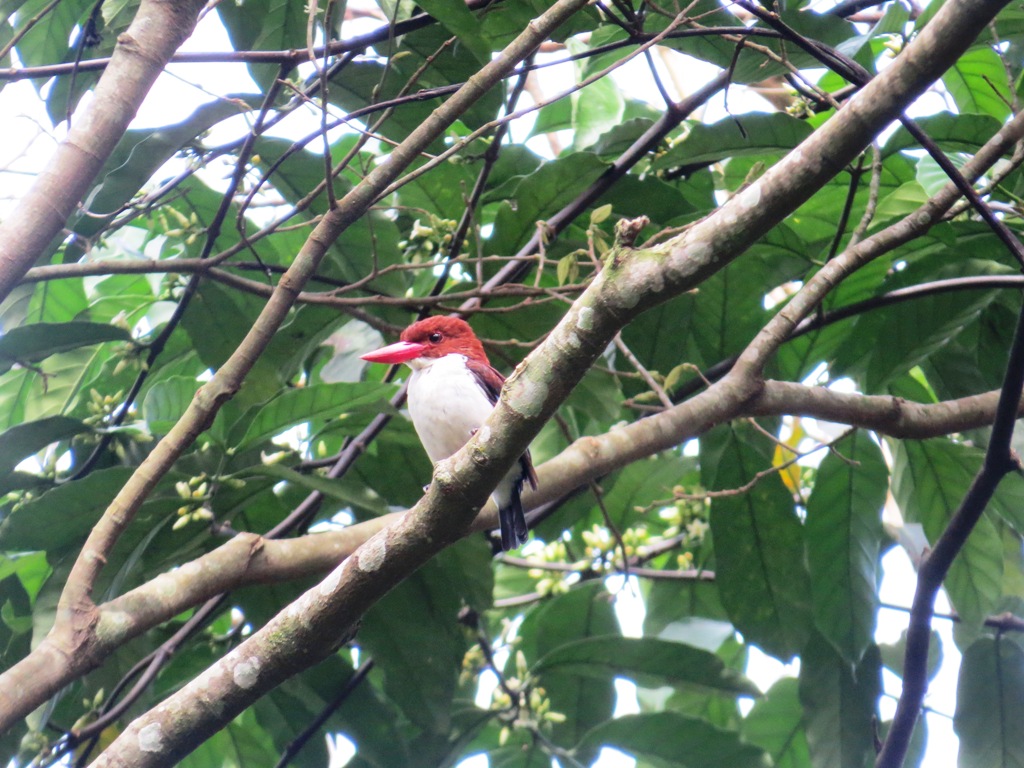
Next, our birding adventure headed to the Kirumya Trail, which passes through the forest toward the Semliki River. We hit some great pockets of birds. At one particular spot in quick succession, we were presented with the unusual African Piculet, Crested Malimbe, Scaly-breasted Illadopsis, Chocolate-backed Kingfisher, Blue-throated Roller, Chestnut-capped Flycatcher, and Lesser Bristlebill.
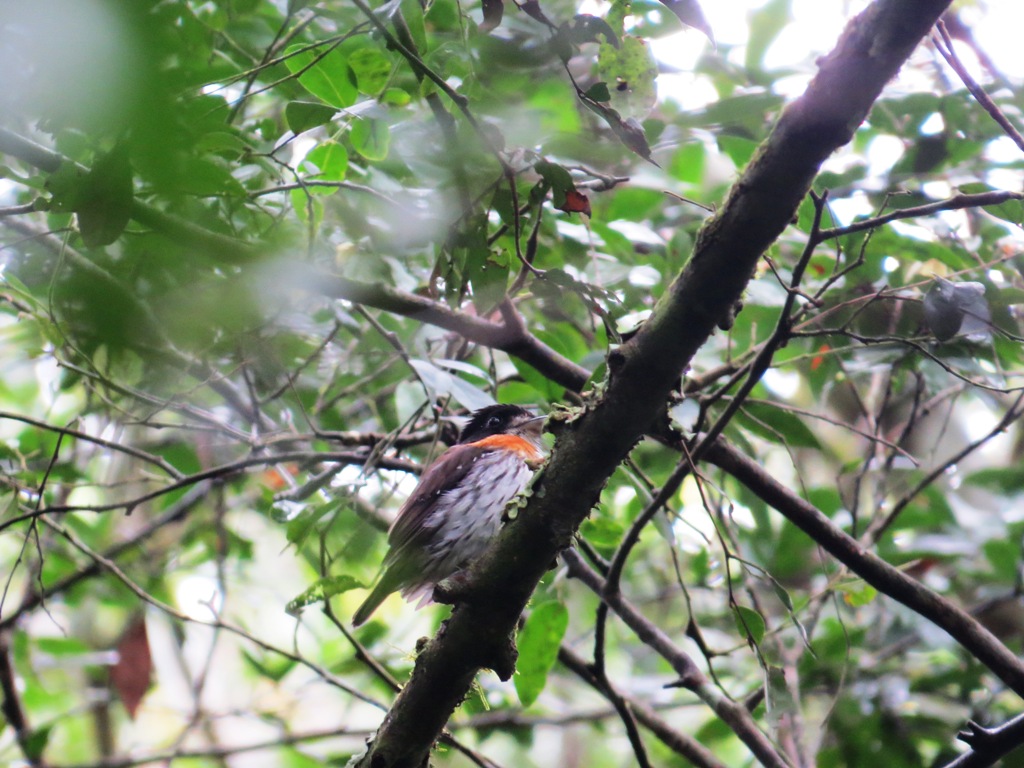
MARCH 17TH: SEMLIKI NATIONAL PARK
The day started nicely with an early sumptuous breakfast well prepared by Brian, and next we embarked on birding in Semliki forest nature trails. The trails were a little quieter than in the morning, but somehow we managed to find target birds: an extremely confiding Yellow-throated Cuckoo, Yellow-billed Barbet, Rufous-sided Broadbill, Forest Scrub Robin, Orange-cheeked Waxbill, and the shy White-crested Hornbill.
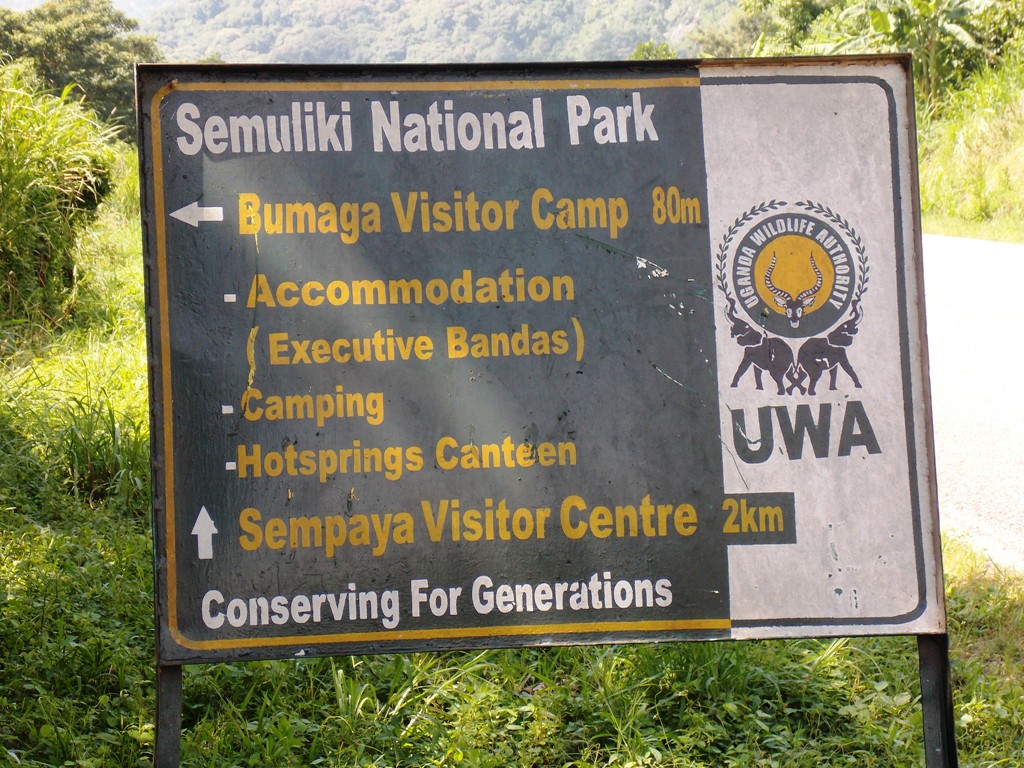
MARCH 18TH: Transfer- Masindi
On another travel day, the long drive was broken only by the occasional stop for roadside raptors, mostly Lizard Buzzard perching on electricity poles, Wahlberg’s Eagles circling low overhead, and stops on the many swamps to try our target bird – Papyrus Gonolek.
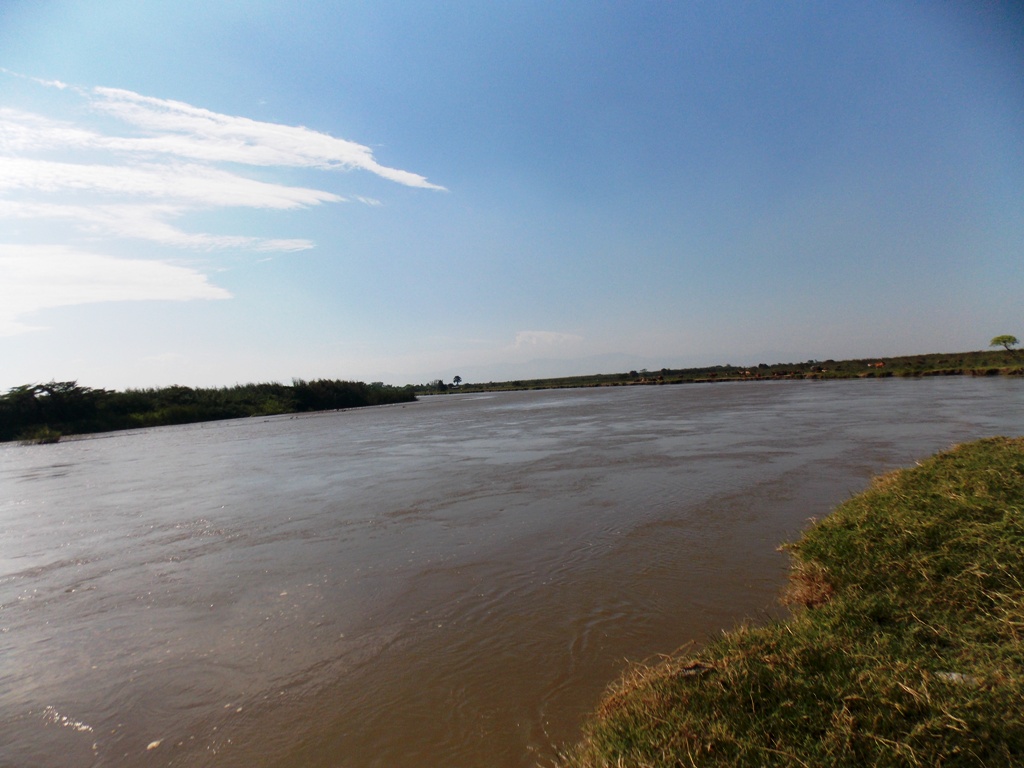
MARCH 19TH: BIRDING IN BUDONGO FOREST (ROYAL MILE)
Our birding session started well; the weather looked good, so we ambled through the trails. Our first sighting was a feeding flock near the entrance to the forest in a big fruiting fig tree. White-thighed and Black-and- White Casqued Hornbills, Violet-backed and Purple-headed Starlings, were all foraging on the fruits. It was a very productive day in Budongo Forest. Most of the target species presented themselves quite well; we were treated to great looks of the African Forest Flycatcher, Rufous-crowned Eremomela, Western Black-headed Oriole, Golden-crowned Woodpecker, Narina Trogon, Cassin’s Spinetail, Grey, and Yellow Longbills.
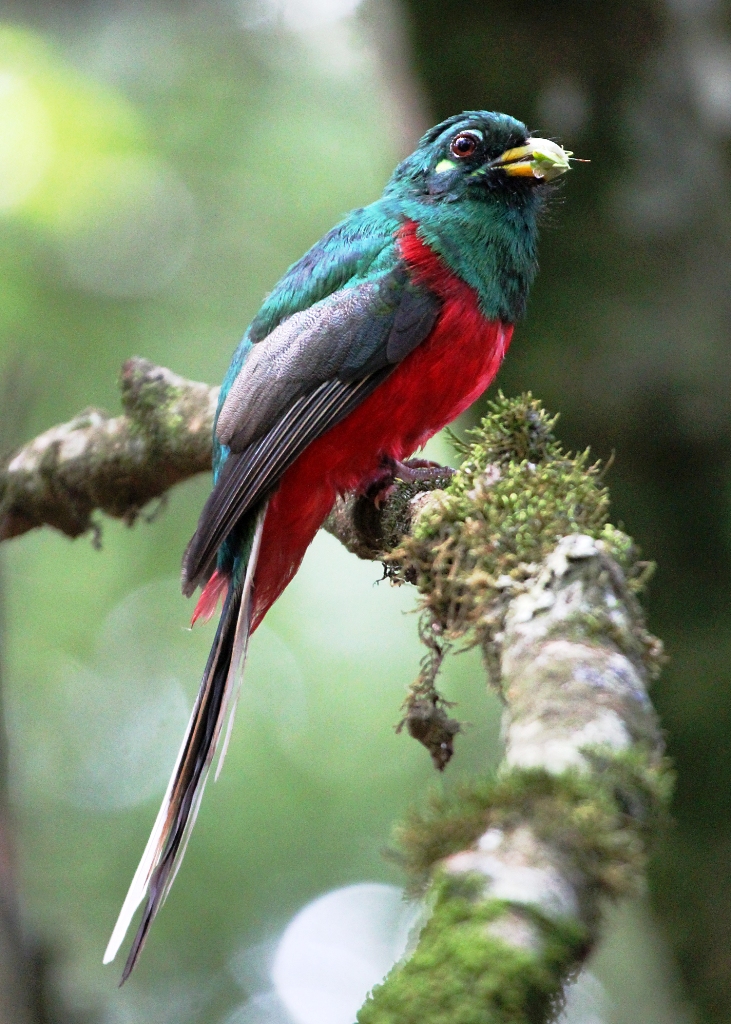
MARCH 20TH: TRANSFER TO MURCHISON FALLS NATIONAL PARK
All day was spent driving through the vast Park, which has landscapes similar to National parks in Australia, along the forested section, the Blue-breasted Kingfisher was heard calling up in the canopy. The trees were quite tall locating their exact spot was a hard task. We decided to continue with the birding tour after all attempts bore no fruit. A lot of Common Buzzards were counted along the road.
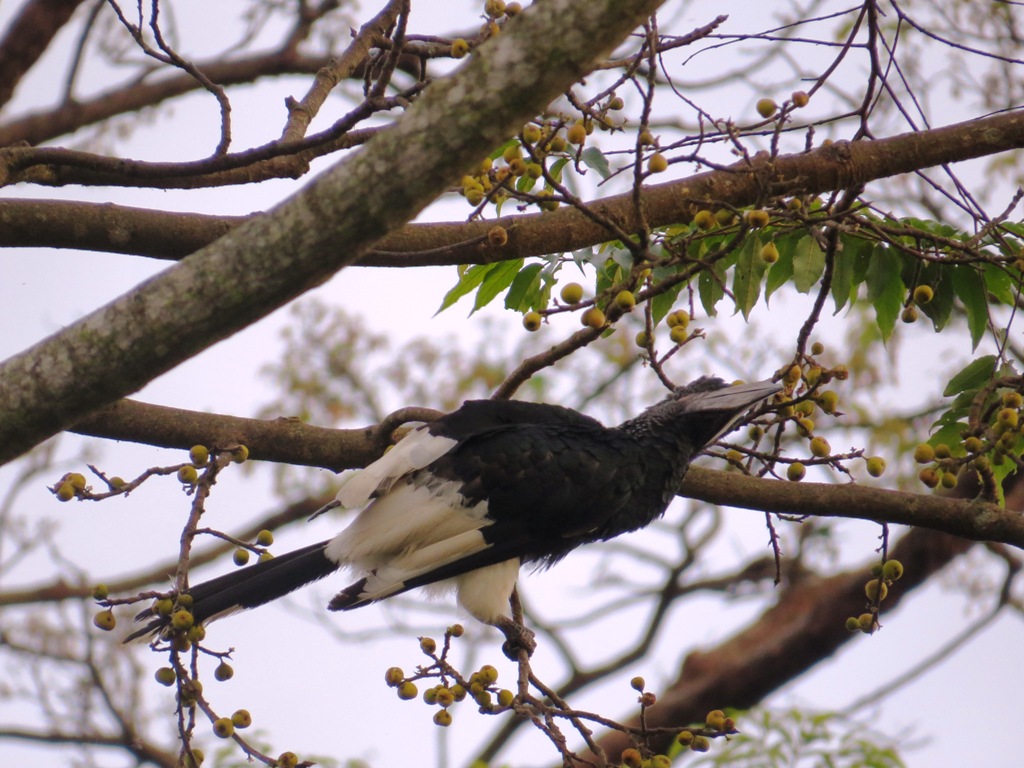
MARCH 21ST: MURCHISON FALLS NATIONAL PARK
Early morning drive to the park, the birding was combined with wildlife viewing, birdwatching was restricted to the vehicle with a few designated areas where alighting from the car was allowed; nevertheless, it was very birdy throughout the day, we saw many, many more great birds. Besides the incredible birding, we had a terrific, large collection of mammals recorded in Murchison Falls National Park, which consisted of: Lions, herds of Elephants, Giraffes, Cape Buffaloes, Patas Monkey, Common Warthog, Olive Baboon, Oribis, Ugandan Kobs, and Jackson’s Hartebeests.
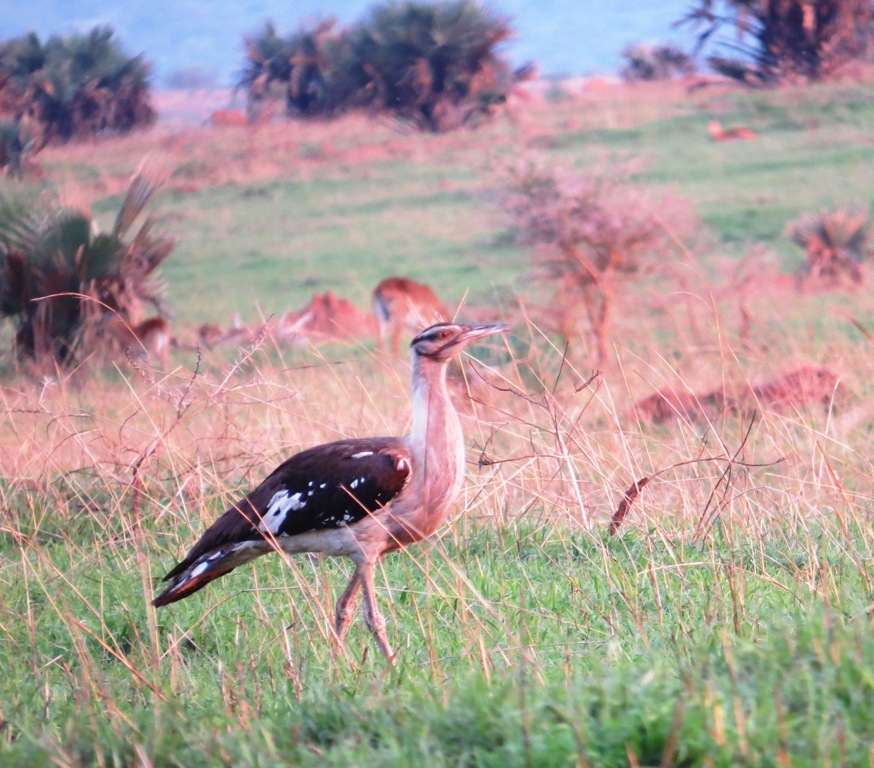
MARCH 22ND: MURCHISON FALLS NATIONAL PARK
For our last bit of birding on the tour, we left our lodge early in the morning and drove back to where we were the previous day to search for missed species. For the rest of the afternoon, we went to search for the Rock Pratincole in Murchison’s Waterfall, which we successfully saw and photographed. The Murchison Falls are spectacular and are formed at a point where the famous River Nile bursts through a narrow 8-meter gorge and dives with an earsplitting blast that creates a rainbow, a truly magnificent sight.
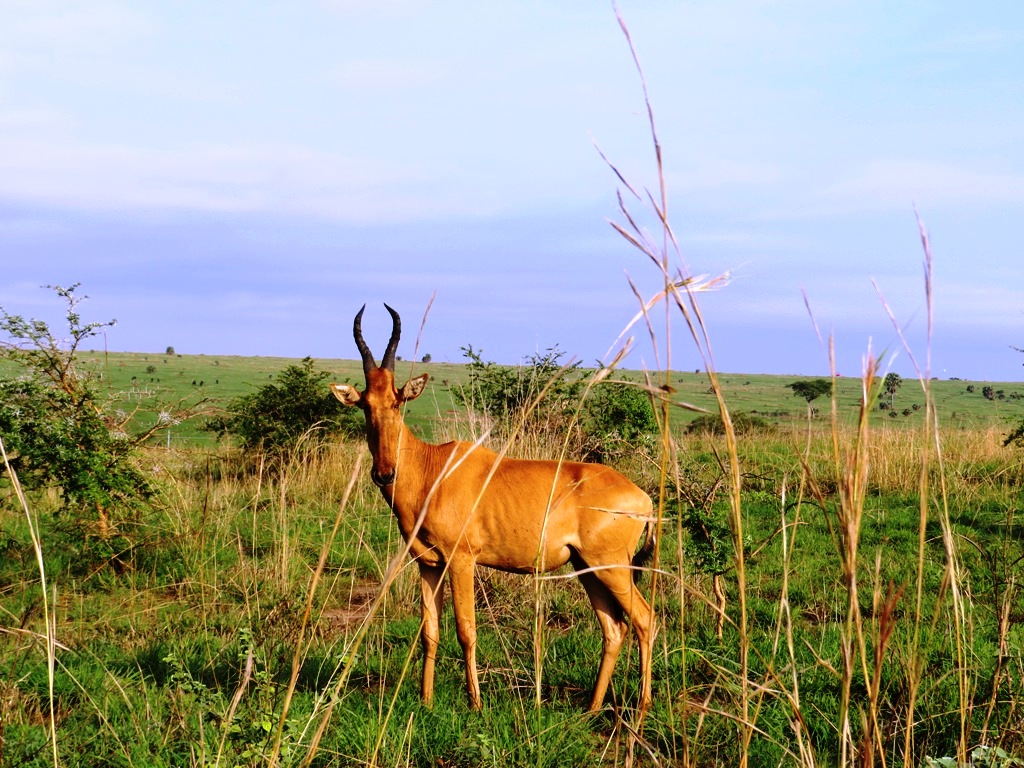
MARCH 23RD: TRANSFER TO ENTEBBE
Our Uganda birding adventure came to an end, with a plethora of fabulous birds and other wildlife in our memories and our photographs. We ended up seeing a very large number of birds for 3 weeks. The majority of birds we saw on the trip presented high-quality views, allowing plenty of photographic opportunities.
Are you keen to visit beautiful places and to see as many of Uganda’s birds, wildlife, and unique and fascinating history as possible? Why not join us on our birdwatching trips to one of the best bird and wildlife places in Uganda?
Discover the Best of Uganda birding with ConQuest Adventures. Below are birding itineraries to sample
Uganda Short Budget Birding Tour